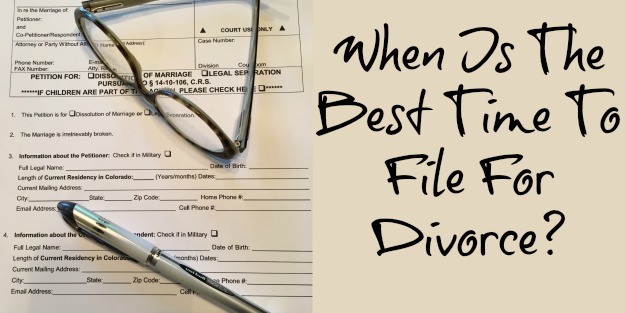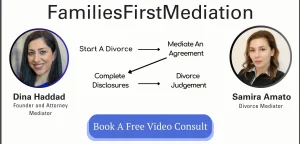Key Decisions for Starting California Divorce Proceedings
In past discussions, we’ve explored the various processes available for pursuing divorce and their impact on the case’s outcome. Once a process is chosen, the next crucial decision is determining when to file for divorce.
Initiating Divorce: Filing the Petition
A divorce begins with the filing of a Petition for Dissolution of Marriage, served on the other party. Upon filing, certain legal protections called “Automatic Temporary Restraining Orders” (ATROS) come into effect:
- Restrictions on Child Custody and Travel: Parties are prohibited from removing minor children from the state without written consent.
- Financial Restraints: Restrictions are placed on altering insurance policies, disposing of property, or making significant financial changes without written consent or a court order.
Importance of Filing: Date of Separation and Financial Implications
When you’re thinking about filing for Divorce in California, it’s essential to understand the significance of the moment you submit your petition. It’s like turning a page in the book of your life, marking the beginning of a new chapter. This date is crucial because it officially kicks off the process of separating from your partner.
After this point, any money you earn might not be considered shared anymore. It becomes your own, separate from what your partner earns. This change can stir up a lot of emotions, maybe you’re relieved to start fresh, or perhaps you’re feeling sad or uncertain about the future.
It’s vital to grasp what this date signifies for both you and your partner. It’s not just about finances; it’s about disentangling your lives and figuring out what comes next. Every decision you make from here on out can have a significant impact on your future, both financially and emotionally.
During this challenging time, it’s crucial to recognize the human side of things. Behind all the paperwork and legal procedures, there are real people with real feelings. Seeking support from professionals like those at FamiliesFirstMediation or experienced lawyers can provide guidance and assistance. Their expertise can help you and your partner navigate this difficult period with kindness and understanding, paving the way for a smoother transition to the next chapter of your lives.
Child Support and Timing of Petition Filing
When it comes to child support in California, it’s essential to understand how timing plays a crucial role. Unlike some other states, California courts have the authority to award child support retroactively, starting from the date when the petition for divorce or separation was filed, rather than just from the date of the court hearing.
This means that if you file for divorce or legal separation and later a court determines that child support is necessary, the support can be calculated from the date you filed your petition, not just from when the court officially addresses the matter in a hearing.
However, it’s important to note that navigating the complexities of family law in California can be challenging, especially when it comes to issues like retroactive child support. In such cases, seeking specific legal advice from professionals well-versed in family law is highly recommended.
Consulting with experienced lawyers who specialize in family law matters, such as those at ffmediation.com, can provide invaluable guidance tailored to your unique situation. They can help you understand your rights and responsibilities, navigate the legal process, and ensure that the best interests of your children are protected.
Ultimately, when it comes to child support and the timing of petition filing in California, it’s crucial to be well-informed and seek appropriate legal counsel to ensure the best possible outcome for you and your family.
6-Month Waiting Period and Finalization
Preparation and Consideration
Divorce is emotionally challenging, often signifying a contentious phase. Preparation is essential. Mediation can offer a less adversarial route. At Families First Mediation, we assist with petition preparation, filing, and serve it to the other party, ensuring both spouses are involved and informed.
For assistance with your California divorce, contact us by phone or email to explore how we can support you through the process

